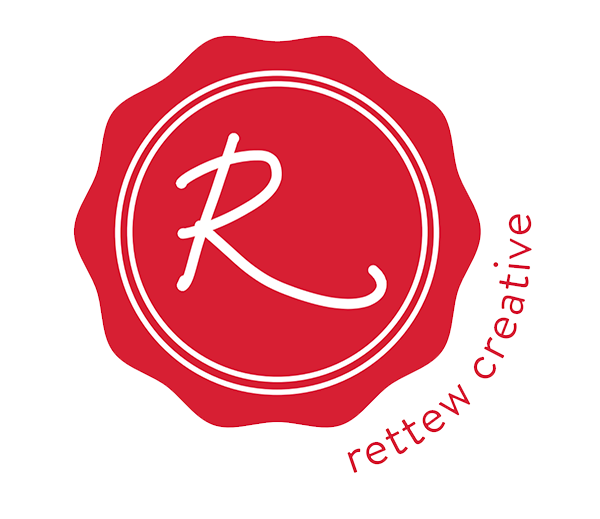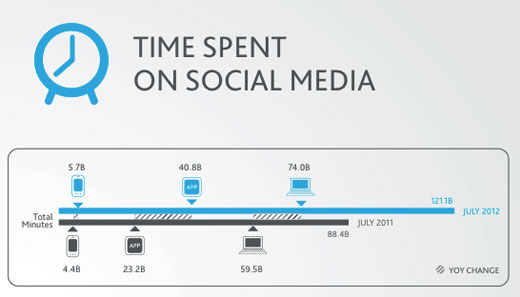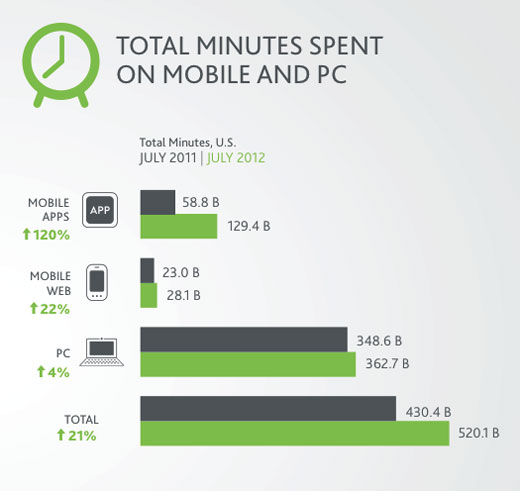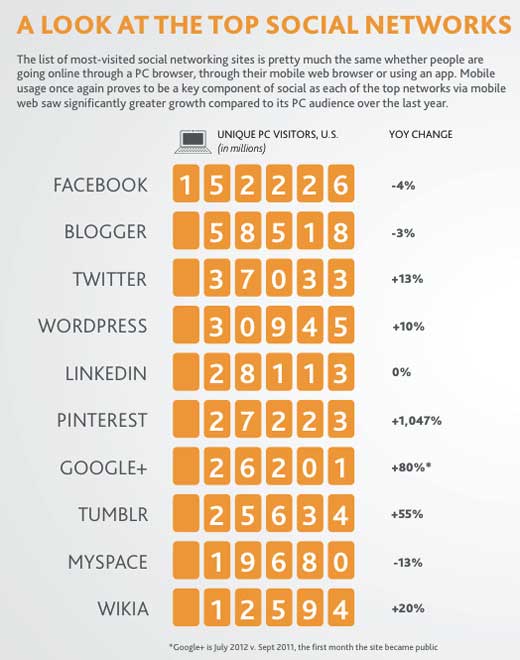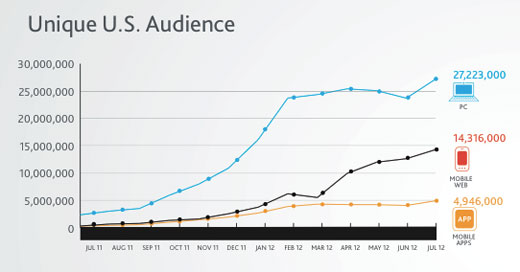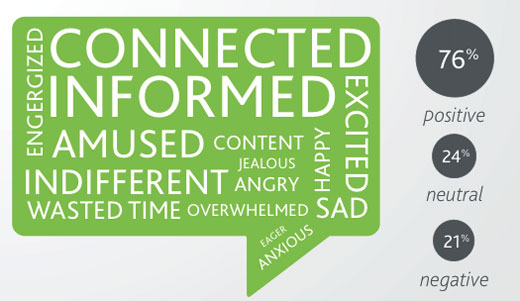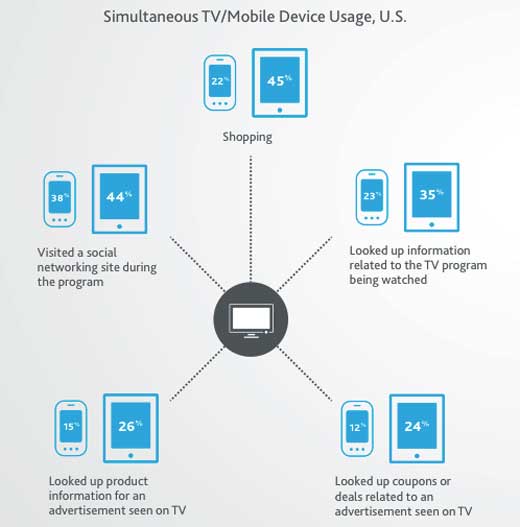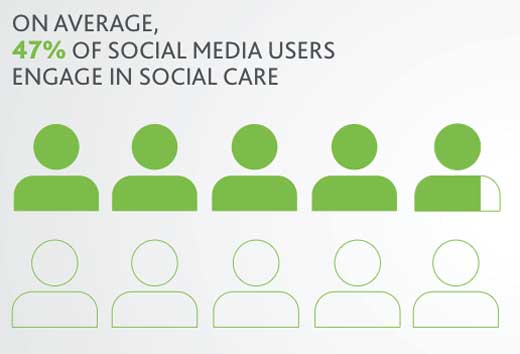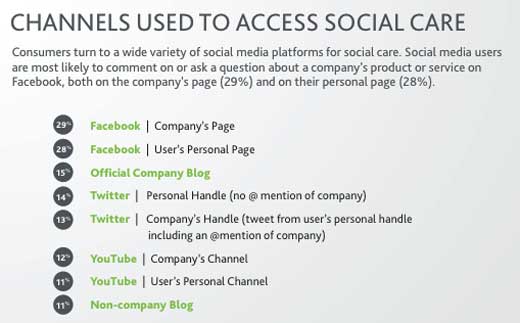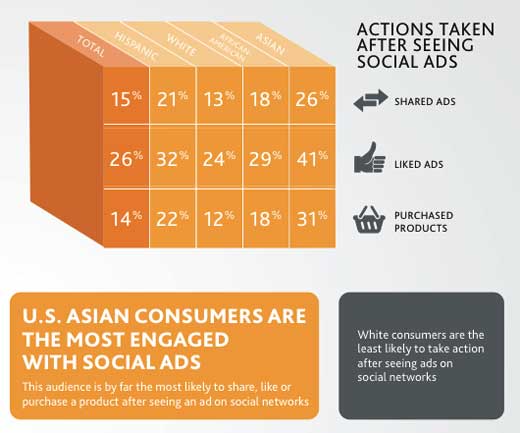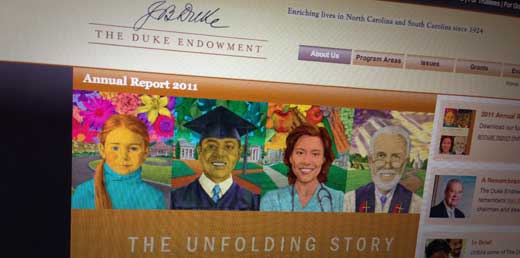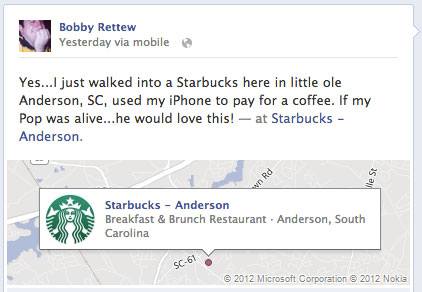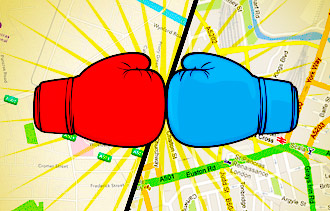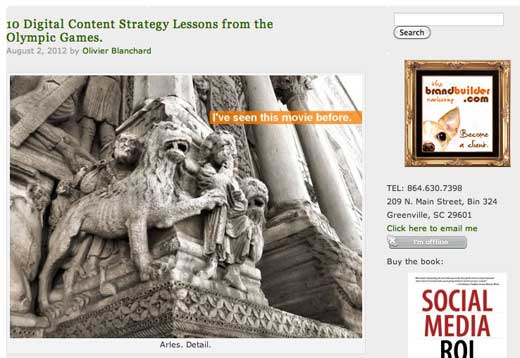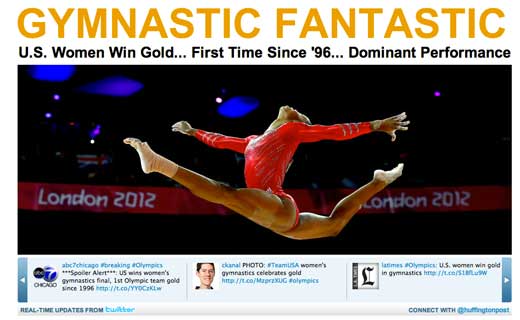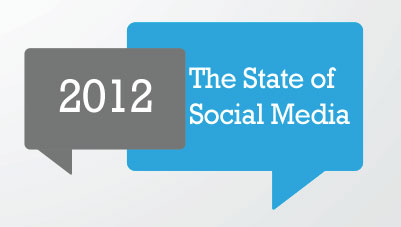
SOCIAL MEDIA IS COMING OF AGE
“Social media and social networking are no longer in their infancy. Since the emergence of the first social media networks some two decades ago, social media has continued to evolve and offer consumers around the world new and meaningful ways to engage with the people, events, and brands that matter to them. Now years later, social media is still growing rapidly and has become an integral part of our daily lives. Today, social networking is truly a global phenomenon.”
What’s driving the continued growth of social media?
“More people are using smartphones and tablets to access social media. The personal computer is still at the center of the social networking experience, but consumers are increasingly looking to other devices to connect on social media. Time spent on mobile apps and the mobile web account for 63 percent of the year-over-year growth in overall time spent using social media. Forty-six percent of social media users say they use their smartphone to access social media; 16 percent say they connect to social media using a tablet. With more connectivity, consumers have more freedom to use social media wherever and whenever they want.”
How is consumer usage of social media evolving?
“Social TV is on the rise. The skyrocketing adoption and use of social media among consumers is transforming TV-watching into a more immediate and shared experience. As of June 2012, more than 33 percent of Twitter users had actively tweeted about TV-related content. Some 44 percent of U.S. tablet owners and 38 percent of U.S. smartphone owners use their devices daily to access social media while watching television.”
“Social Care is transforming customer service. Social media has emerged as an important channel for customer service, with nearly half of U.S. consumers reaching out directly to brands and service providers to voice their satisfaction or complaints, or simply to ask questions. In fact, one in three social media users say they prefer to use social media rather than the phone for customer service issues.”
“Whether through a computer or mobile phone, consumers continue to spend increasing amounts of time on the Internet. Time spent on PCs and smartphones was up 21 percent from July 2011 to July 2012.”
Social Networking Is All About Mobile
“When it comes to accessing social content, it’s all about mobile—particularly apps. App usage now accounts for more than a third of social networking time across PCs and mobile devices. Compared to last year, consumers increased their social app time by 76 percent, spending more than seven times more minutes on apps than the mobile web.”
“While the social media audience via PC declined a slight five percent from a year ago, time spent increased 24 percent over the same period, suggestinging that users are more deeply engaged.”
A Look At The Top Social Networks
“The list of most-visited social networking sites is pretty much the same whether people are going online through a PC browser, through their mobile web browser or using an app. Mobile usage once again proves to be a key component of social as each of the top networks via mobile web saw significantly greater growth compared to its PC audience over the last year.”
The Spotlight is on Pinterest
“Pinterest has experienced exponential growth since bursting on the scene last year. Although that growth has leveled over the last few months, Pinterest had the largest year-over-year increase in audience and time spent of any social network, across PC, mobile web and apps.”
Why We Connect…Some General Feelings
This is an interesting look at some of the general feelings after individuals participated in social networking.
Twitter Drives Social TV
“Twitter has emerged as a key driver of social TV interaction. During June 2012, a third of active Twitter users tweeted about TV-related content, an increase of 27 percent from the beginning of the year.”
Social Care Is Growing
“Social care, i.e. customer service via social media, has become an immediate imperative for global brands. Customers choose when and where they voice their questions, issues and complaints, blurring the line between marketing and customer service. Brands should consider this evolution and ensure they are ready to react on all channels.”
Social Advertising
“Brands and advertisers looking to share their message on social might consider this: While a third of people find ads on social networks to be annoying, more than a quarter of people are more likely to pay attention to an ad posted by a friend.”
This information was compiled from the Nielsen NMIncite 2012 Social Media Report. If you would like to download this report, GO TO –> http://nmincite.com/download-the-social-media-report-2012/
